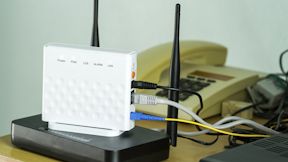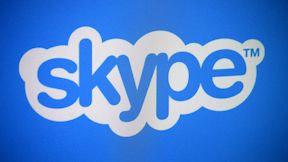|
|
Do This Before You Set Up a New Wifi Network

As wifi becomes ever more ubiquitous, so do a host of wifi problems that range from mildly irritating to infuriating or even dangerous. Most of them can be fixed with the right know-how – but even better, many can be prevented altogether by simply doing this one thing. And for small applications it’s even free!
Wireless Site Survey
The trouble with wireless internet can easily be illustrated by wire internet. If you buy the wrong length wire, you very soon know about it, as you either roll up hundreds of feet of excess cable into a nest of noodles around your feet or route the cable across the middle of the floor with duct tape. You can see a cable. But if your hub has a range of six inches, or they’re picking up your office intranet in North Korea, it’s hard to know: you can’t see wifi.
Now you can.
If you use Windows, there are a plethora of survey tools available for free, freemium and purchase. If you’re looking for a few pointers for a small network there are plenty of free options. You can pay as much as $4, 000 for a tool like Cisco’s Wireless Control System if you’re rigging up a big network. For Mac, the options are more limited: NetStop has a good reputation and both free and purchase versions are available, so we’ll talk a little about that.
For Larger Wifi Network
If you’re building a larger wifi network you’re going to need to get into AP placement, cabling needs and a host of other requirements, and the likelihood is that you’re going to need the paid-for version of an application that can handle all those variables. That’s a subject for another post. What about if you’re just setting up a network for a smaller area? No coffee shop or other business, whatever it actually does, is complete without free wifi now. The chances are that if you’re covering an area with less than a 100-foot radius from your wifi point, you’ll only need one AP.
WIFI Site Surveying Tool
Use your wifi site surveying tool to find out several key metrics, including SSID, bans, security type (if it’s WEP, you’ll want to change that!), vendor, mode (b/g/n), signal to noise, signal percentage, and more. Not every tool offers every level of functionality, but before you call your wifi network good to go, give it the once-over with a site surveying tool and make sure there are no obvious glitches. Your customers and co-workers will never thank you – because if it’s done well they’ll never know it was done at all.
Top ↑
|
How Do Spammers Get Your Email Address?

We all use spam filters. Every company we sign up to, whether it’s for free newsletters, financial services or online shopping, promises never to share your data with anyone. So how are people who want you to buy dubious meds, unlikely stocks or even more unlikely get-rich-quick schemes getting your email address?
Unfortunately, the nature of the internet is such that it’s almost impossible to protect an email address from spam entirely for any length of time.
The easiest way for a spammer to get your email address is by getting hold of a leaked account database. It happens more often than you’d expect – over the last few years, Adobe, LinkedIn, eHarmony, Gawker, Last.fm, Yahoo!, Snapchat and eve the mighty Sony have lost hundreds of thousands of users’ details each. These leaked databases are assessed first and foremost as a security threat, because they’ll often show account names and passwords. But they usually also show email addresses, meaning spammers can download them and have a readymade address book to send out their phishy emails to. Spammers will know that the majority of these addresses will actually be active, so these databases represent a great catch for them.
That accounts for the majority of cases where you’ve never given away your details but somehow spammers have found your address anyway. There are websites, like haveibeenpwned?, that will tell you if your account information has been leaked, but these sites won’t include every leak. And your email address is in some ways more vulnerable than any password, because you can use different passwords everywhere – but you pretty much have to use the same email address everywhere.
The other big way for spammers to get your address is to scrape the web for email addresses, picking up on the ones that are mentioned on websites in much the same way as search engines scrape for content online. This method is getting less popular now, since many sites use an internal contacting system or assign users a temporary email address to beat spam, and spammers have huge leaked contacts lists to use instead.
If you do get spammy emails, there are things you can do to keep the volume low. Spammers use bugs to see is you’re interacting with their emails, so they know if your account is active. If you click on ‘unsubscribe,’ legit businesses unsubscribe you. Spammers identify your email account as active and step up the pressure. It’s the same if you load images: images are often used as a way for spammers to check whether you’re opening your emails or not. Even if a visible image doesn’t load, there’s often a tiny tracking bug that does register your click.
So what can you do to stay spam-free? Don’t give out your email address online, don’t interact with spam if you get it, and consider having a ‘signing up for things’ email address and a personal email that you never use to sign up to any business, so the only way hackers can get it is if your email provider is hacked or leaks.
Top ↑
|
A Glimpse At Skype Translator

Skype Translator is a live translation service. It lets people talk via voice and video in real time, even if they don’t speak the same language, and it’s ready for public rollout right now, though that roll-out will initially be limited.
On the official Skype blog, Microsoft is asking or sign-ups from those interested in trialling Skype Translator, and it’s initially going to be a free trial, though more than one observer foresees a future for the service as a paid subscription add-on to Skype’s basic functionality down the line when the bugs are ironed out.
Skype Translator will work by translating both sides of a conversation into the preferred language of both users in real time, and simultaneously displaying a rolling on-screen transcript of the conversation as it happens. The transcript part hints at a future as a business add-on – businesses are more likely to want transcripts than individuals, after all – and that tends to reinforce the idea that the service will eventually be paid.
There’s a split in the Skype Translate provision right now between IM and voice and video. IM currently supports about 45 languages, but voice and video only supports a smallish number, apparently optimised for business use: the sign-up page lists Russian, Arabic, Cantonese, English, French, German, Italian, Japanese, Korean, Portuguese, Mandarin and Spanish.
Skype says it expects a technical preview before the end of the year, and initial reviews from the first sign-ups will be out soon too. That means we’ll all get to hear about a service that could soon be as ubiquitous as instant messaging or online videocalls, as well as easing the pressure on Google Translate!
Top ↑
|
Six Things You Should Do to Clean Your Computer

You know when it’s clean up time – but somehow, your computer, the tool you probably use more than any other, never seems to make it to the top of the list. Let’s rectify that. Here are six things you can do to make your computer a clean, sweet and joyful experience.
Run a virus/malware scan.
Ideally, run two of each. Most antivirus programs have some holes, so a scan from more than one provider is a good idea. There’s no need to shell out huge sums: Avast, AVG, Symantec, MalwareBytes, SpyBot and more will all offer you plenty of free functionality. Having a bunch of anti-malware and antivirus programs running in the background is its own kind of headache, though, so uninstall all but one after you’re done.
Get rid of programs you never use.
Run through your list of programs and dispose of anything that you don’t use regularly or know you need. Many of these programs will promote themselves to run at startup and install other bits of themselves, constantly connect to the web and run permanently in the background, sucking at memory, CPU and bandwidth. Dispose!
Actually clean your actual computer!
Your computer is two things: an electronic tool and a physical object. Great, you got rid of all the viruses on your hard disk – but your keyboard is still the dirtiest thing in the office (no, really!) and the inside of your computer deserves some attention too.
Blow out the dust and lint that physically clogs up your computer. The lint in the fans, especially, is actually slowing down the operation of your machine. You’re best off doing this with a compressed-air can, available from almost any office supplies store, or an air compressor if you have one. It’s often a good idea to do this outside rather than inside – there’s more dust in there than you think! – but don’t use your breath: the moisture in your breath can damage the microprocessor.
Outside too
Clean your keyboard with the compressed air can too. So long as no keys are loose, it won’t be damaged, but you will be amazed at how much fluff, lint and grit gets blasted out of there! All that stuff can build up between the keys and make them stick or not work properly, or even (rarely) permanently damage them.
Clean your screen
… and your mouse, and your keyboard all over again, this time with an isopropyl or other swab. You can use the same swabs nurses use before they give you an injection, or premoistened disposable electronics cleaning swabs. As long as there’s no moisture floating around free you should be fine. Wipe the screen, the mouse and then turn the mouse upside down, look in awe at all the stuff that’s accumulated there and wipe that down too. Clean your keyboard with a swab before you plug it back in.
Clean up your startup list
Open the ‘run at startup’ list in the system preferences panel if you’re a Mac user. If you’re on a Windows machine open the command prompt and type ‘msconfig,’ then select the ‘startup’ tab. Either way, you can now select for youself which programs you want to open when you open your computer. If you haven’t done this in a while, expect some uninvited newcomers to show up on this list!
Now it’s clean inside and out, your computer should be a lot more pleasurable and easier to use!
Top ↑
|
How to Hack Google (No, Not Like That!)

Google is a superb tool. It’s like a Swiss Army Knife: it’s so great most people who use it don’t know what half of it even does. If you’re just typing words and phrases into that omnibox and scanning the first page for what you wanted, you’re leaving a lot on the table. Here’s how to hack Google for precision, depth, and way, way more accurate searching.
Quote Unquote
Google searches by a set of proprietary algorithms, which means Google won’t tell anyone exactly how Google searches. But it only searches for exact words or phrases if you tell it to. Enclose your search term in quotes – “it has to be these,” ‘these kind don’t work’ – and Google will find you exactly hat you’re looking for. Once this worked for phrases: now it works for words as well. If you’re searching for something unusual and you don’t use quotes you’ll get a lot of ‘words like’ or ‘did you mean’ results. Use quotes and get exactly what you want.
Minus Figures (and Words!)
You can use the ‘-‘ symbol before a word to make sure that Google omits all results bearing that word. That can be useful if you’re searching for, say, Linux, but you don’t want to hear anything about Ubuntu, Fedora or other offshoots.
Site Search
This one is astoundingly useful. It lets you search a site with Google rather than the site’s own, internal search machinery, which is often a little creaky and seldom compares to Google’s power. If a site won’t give you what you want and you know it’s there, or you want a type of result from a specific source, say, psychological research from MIT, you can search: ‘site: web.mit.edu psychology research’ and there it will be. Site search doesn’t need any http://, but you will need to put in the full www.webadress.com to make it work. (For the record, MIT’s site is pretty well put together!)
Wild Card
If you know what kind of thing you want, but you don’t know exactly what you want, you can use a wild card, in the form of the asterisk (‘*’) symbol to represent the unknown information. Then you can search for ‘NFL running back earns * per year’ – and find out what * is. It’s like algebraic search.
Related Words
This will be Google’s idea of related words. Use the tilde symbol (‘~’, alt + n if you’re a Mac user or shift +’ on most other keyboards) to ask Google to search for what it considers to be words similar in meaning to, or otherwise related to, your search terms. Sometimes this will seem a little random, as words that sound or looks the same might come in as well as words with related meanings.
Time Ranges
Google offers time range search built right into its GUI. But if you want more control, or you just find that using keyboard macros makes you feel like a boss, this one’s for you. Put your search term as normal, then two dates separated by two periods, like this:
Ubuntu 2008..2009
File Type Search
Useful for excluding images from searches for large bodies of text or for hunting .doc or .pdf files, as well as for seeking high quality graphics and for many other purposes. File type is as intuitive and simple as you could ask for. You do it by writing ‘filetype:’ your desired file type, and then your search term, like this:
filetype: png sunset boulevard (filetype: png “sunset boulevard” returns very different search results!)
There’s more – but evem the basic course in Googlenautics should allow you to waste a lot less time scrolling through unwanted search results and get more done.
Top ↑
|
|






Leave a Reply
Want to join the discussion?Feel free to contribute!